module 4 lecture 1.1
1/29
There's no tags or description
Looks like no tags are added yet.
Name | Mastery | Learn | Test | Matching | Spaced |
|---|
No study sessions yet.
30 Terms
what is articulation?
act of moving various parts of the mouth and throat (vocal tract) to produce different sounds
what is resonance?
how air (coming from our lungs) interacts with / resonates within cavities in our vocal tract
we say approximately ____ words per minute
175
what do speech and initiation of eating require?
coordination of hundreds of neural signals and muscle contractions
which 3 cavities make up the vocal tract?
the oral, nasal, and pharyngeal cavities
in adults, the vocal tract is shaped like a ________
backwards F
what is the distance between the lips and vocal folds in males?
17 cm
what is the distance between the lips and vocal folds in females?
12 cm
the oral cavity runs from the _____ to the ______
lips to anterior faucial pillars
which cavity contains the lips, teeth, alveolar ridge, hard palate, soft palate (velum), tongue, jaw, and anterior faucial pillars?
oral cavity
what is #1?
anterior faucial pillars
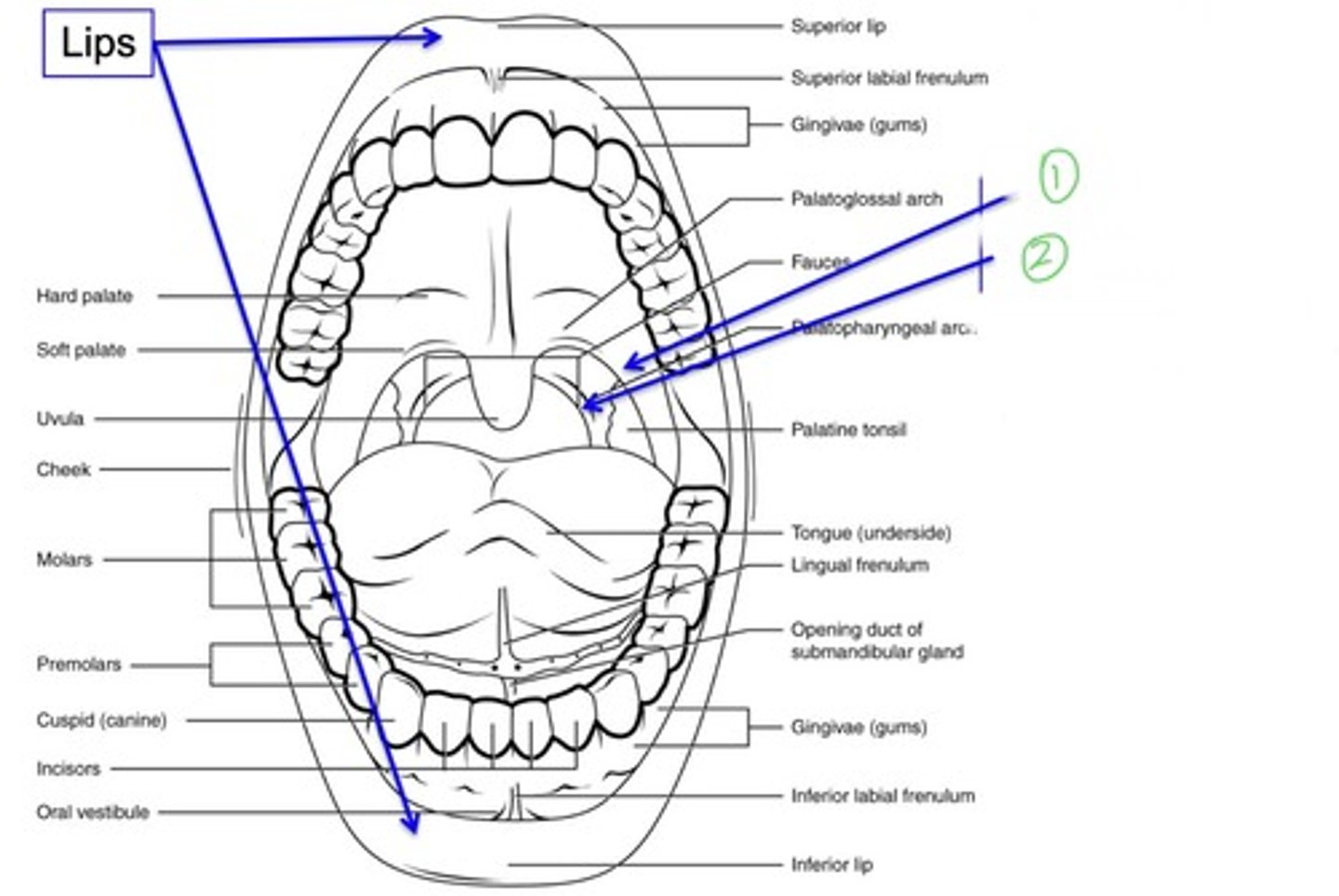
what is #2?
posterior faucial pillars
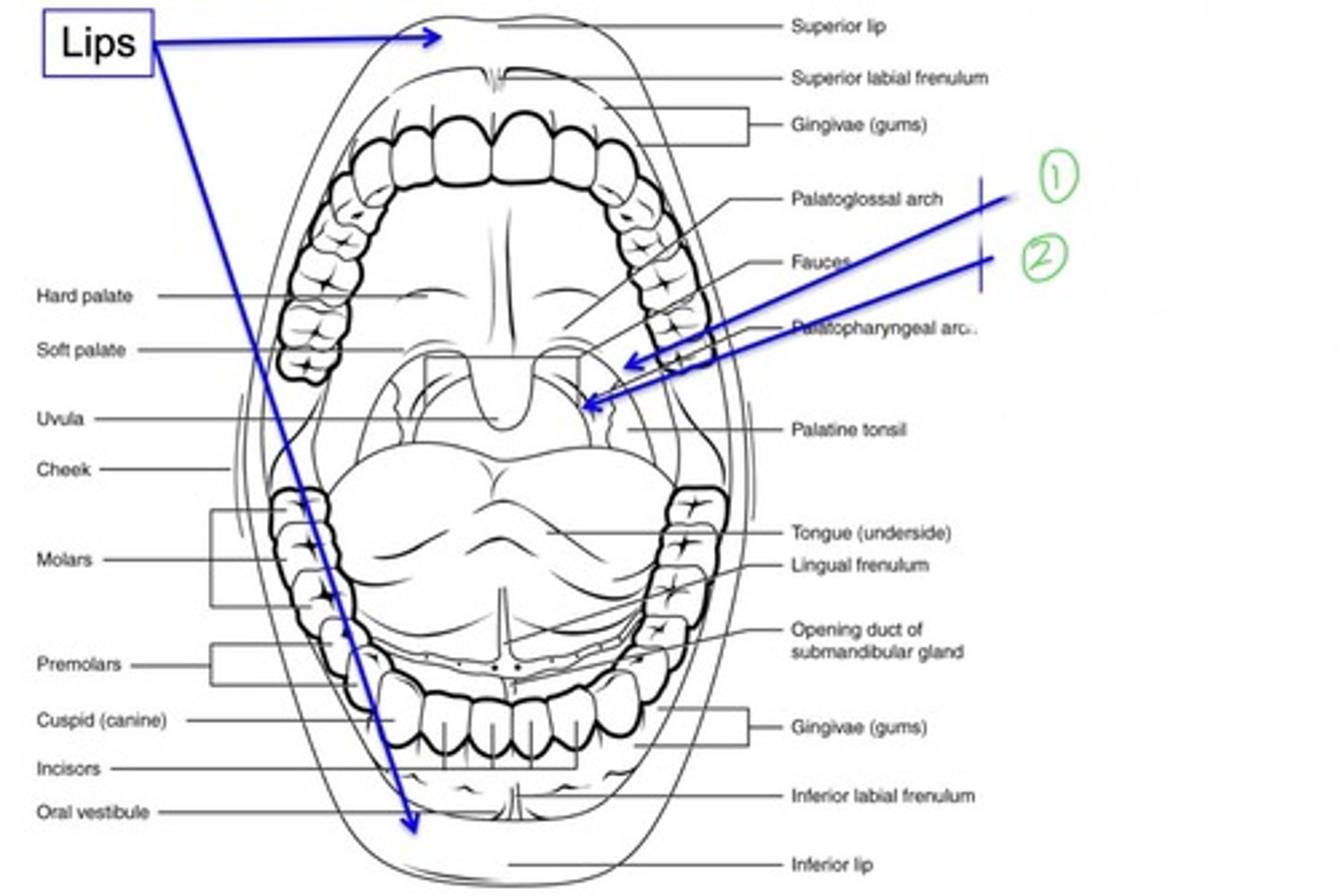
the nasal cavity runs from the ______ to the ______
nares/nostrils to nasopharynx
what does the lower part of the nose do?
it is part of the respiratory tract & it helps to clean & warm air that we inhale
what does the upper part of the nose do?
it is our organ of smell
the nose and 2 chambers are separated by what?
the septum (think of septum piercing -- the nose piercing)
what does each chamber of the nose consist of?
the superior, middle, and inferior conchae and nasal meatuses (nasal passages)
what is #1?
nasal meatuses (nasal passages)
- superior, middle, inferior (from top to bottom)
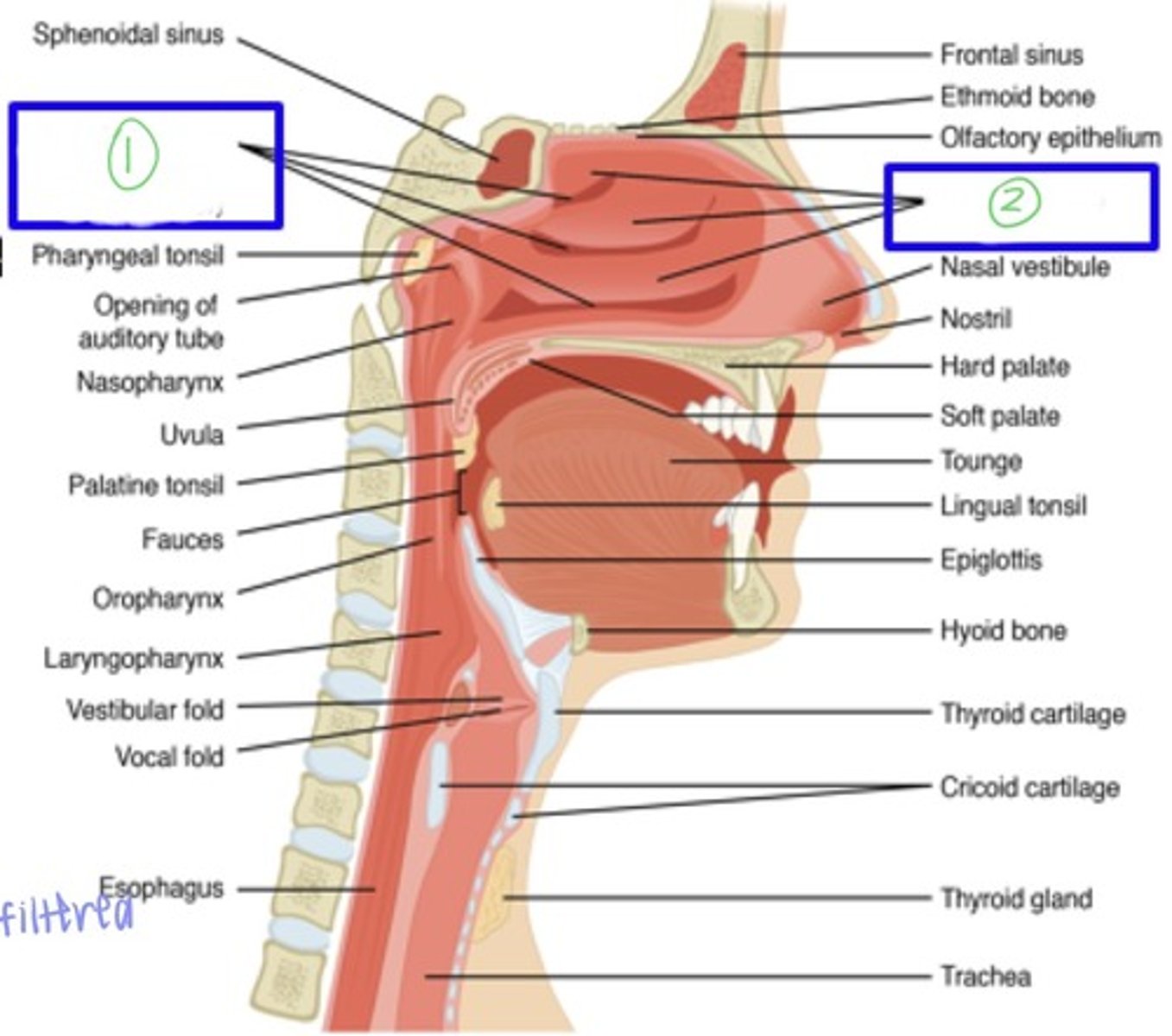
what is #2?
nasal conchae
- superior, middle, inferior (from top to bottom)

the pharyngeal cavity runs from the ______ to the _______
base of the skull to the superior surface of the cricoid cartilage
what are the 3 divisions of the pharynx?
1. nasopharynx
2. oropharynx
3. laryngopharynx
what are the borders of the nasopharynx?
end of nasal cavity to velopharyngeal port
what are the borders of the oropharynx?
velopharyngeal port to the level of tongue/epiglottis
what are the borders of the laryngopharynx?
epiglottis to cricoid cartilage
what is represented in green?
nasopharynx
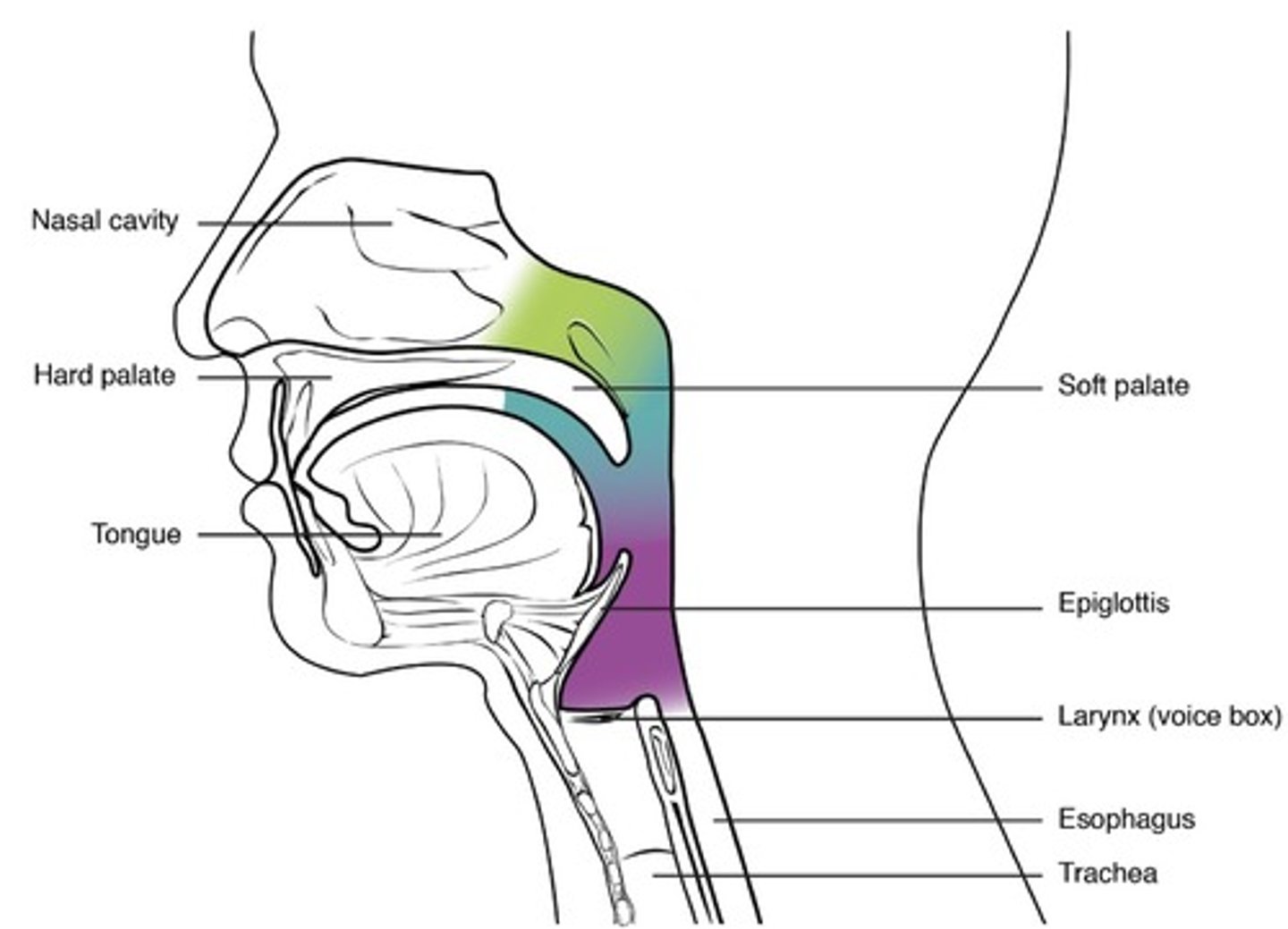
what is represented in blue?
oropharynx
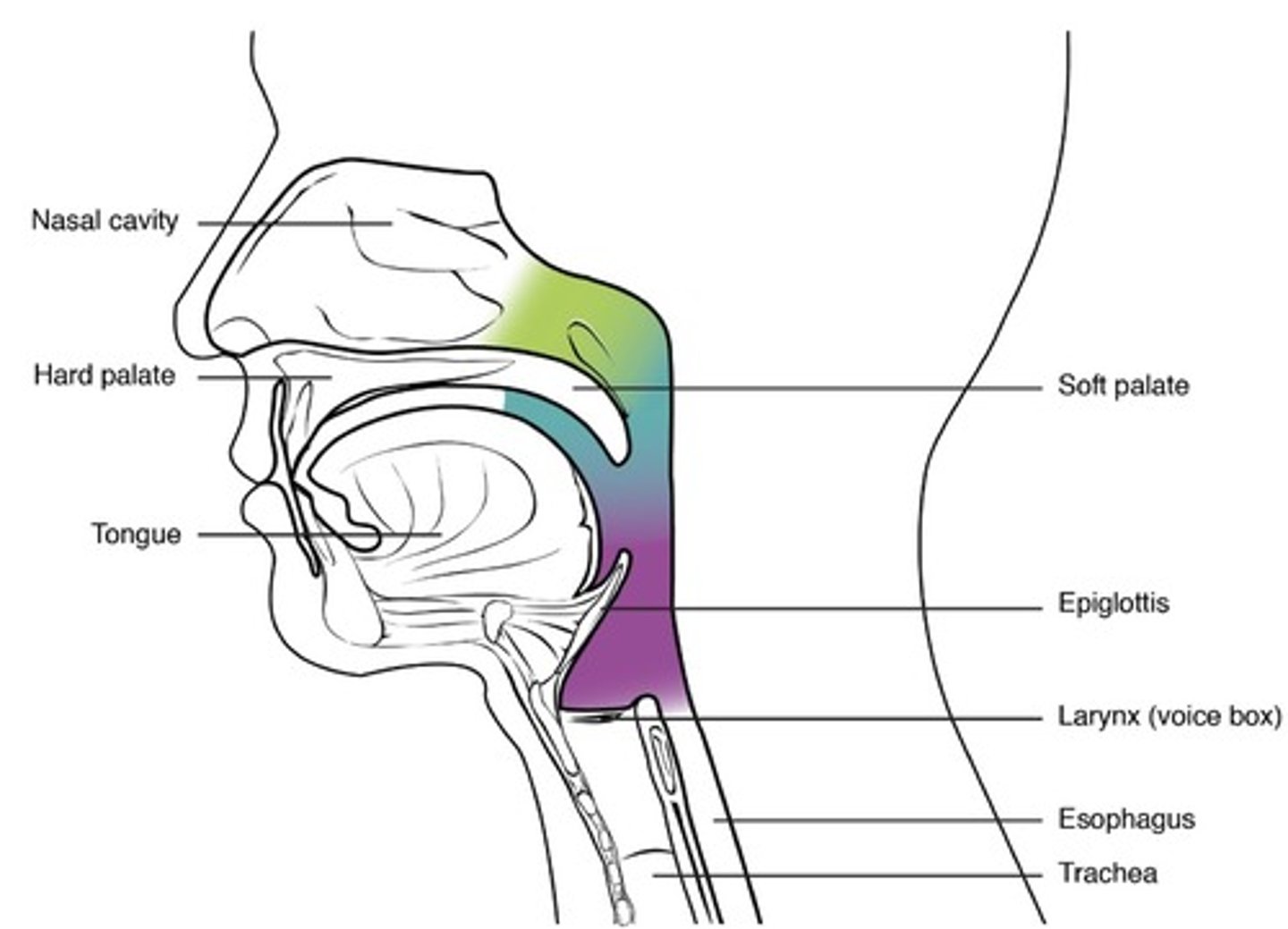
what is represented in purple?
laryngopharynx
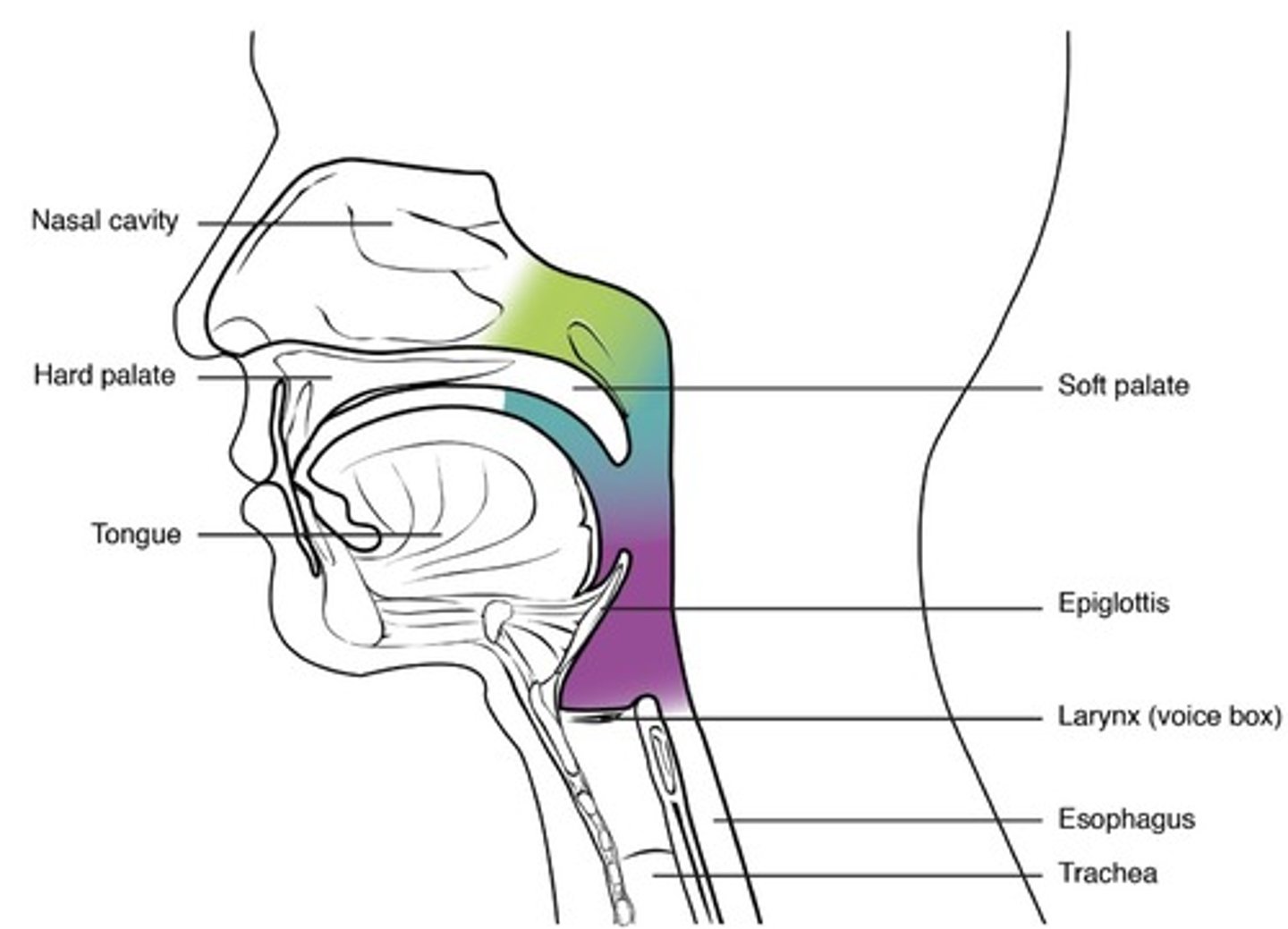
what is the difference between a mobile and immobile articulator?
mobile articulators can be moved by muscle contraction; immobile articulators cannot
what are the 5 mobile articulators?
1. lips
2. velum
3. tongue
4. jaw/mandible
5. pharynx
what are the 3 immobile articulators?
1. teeth
2. alveolar ridge
3. hard palate